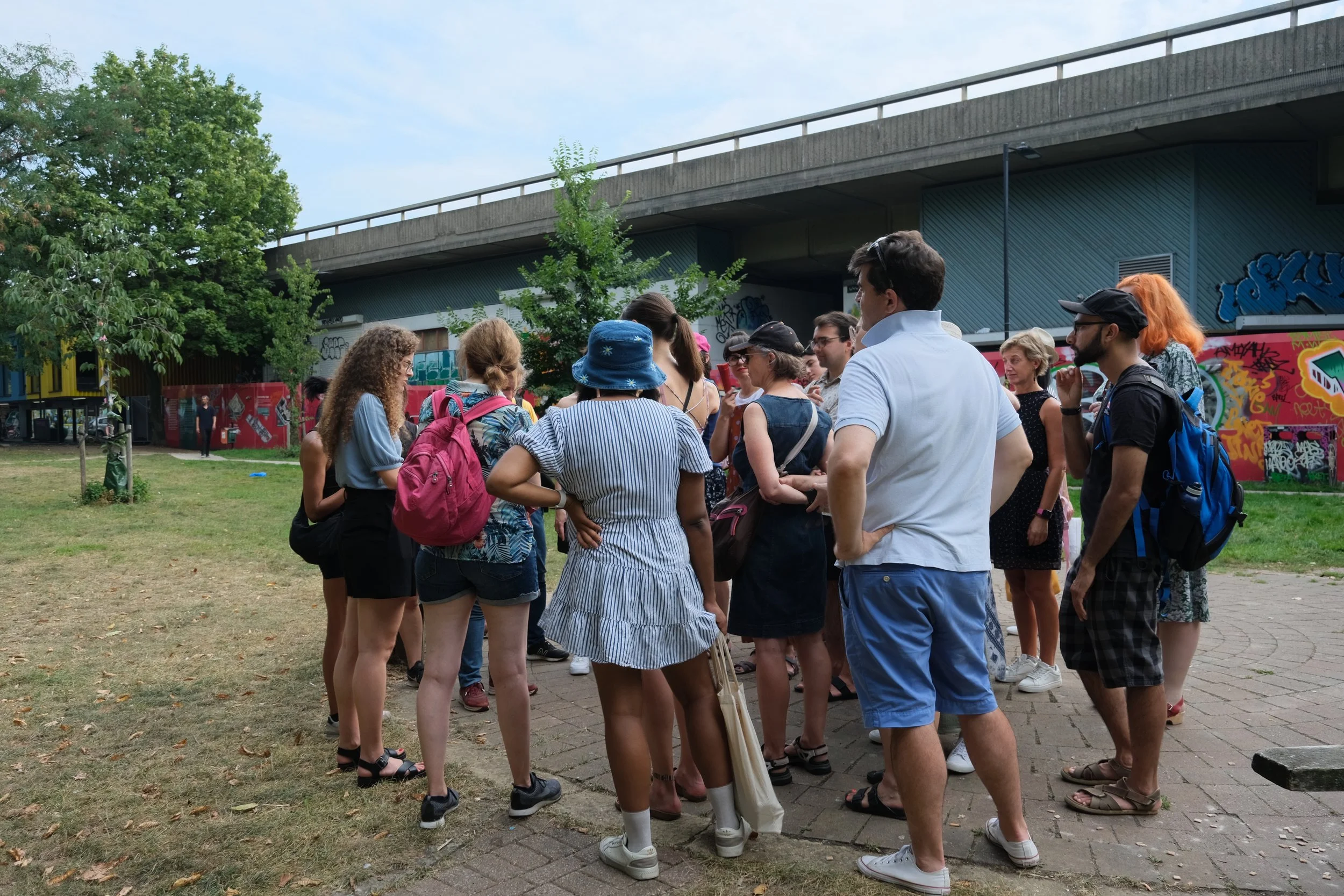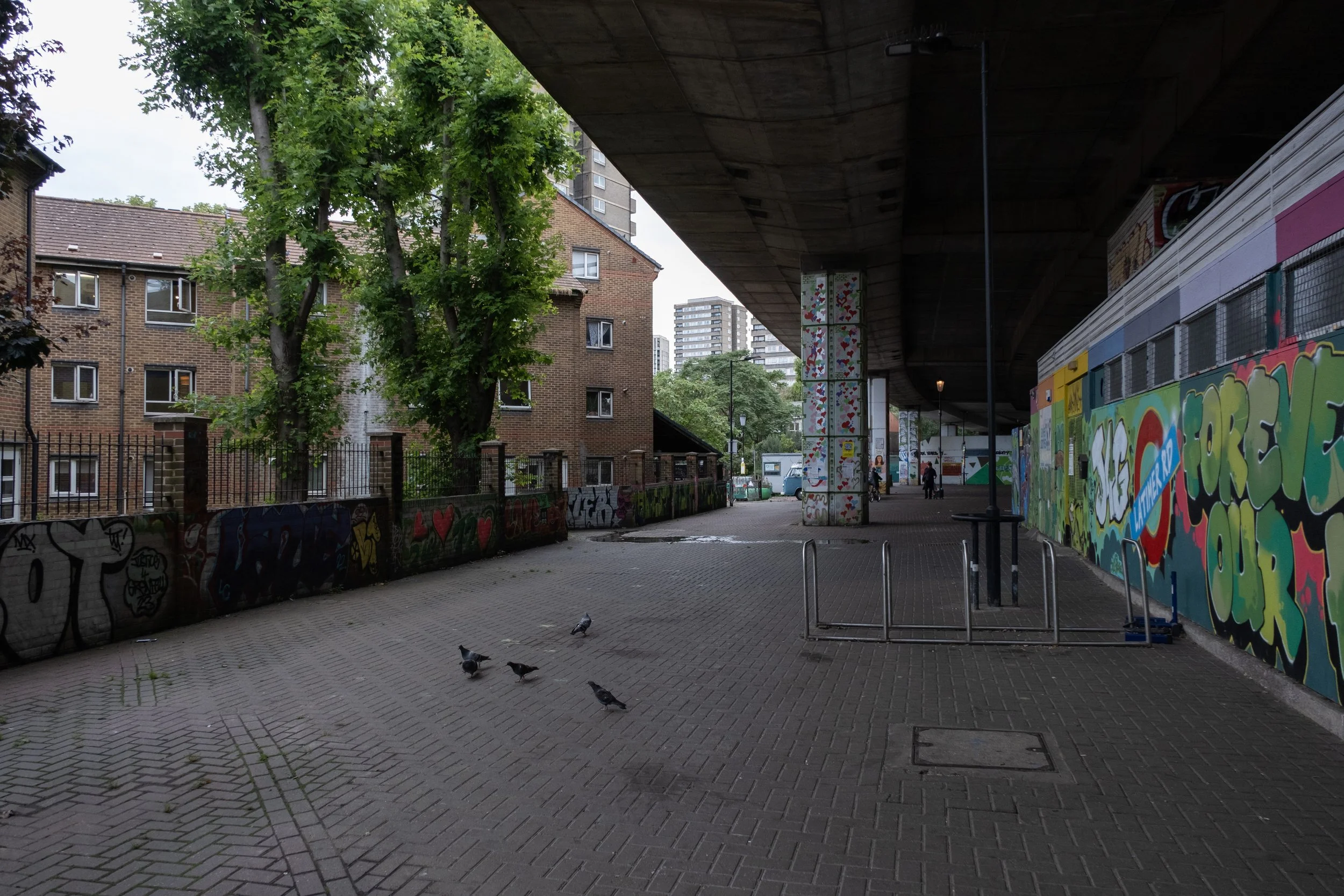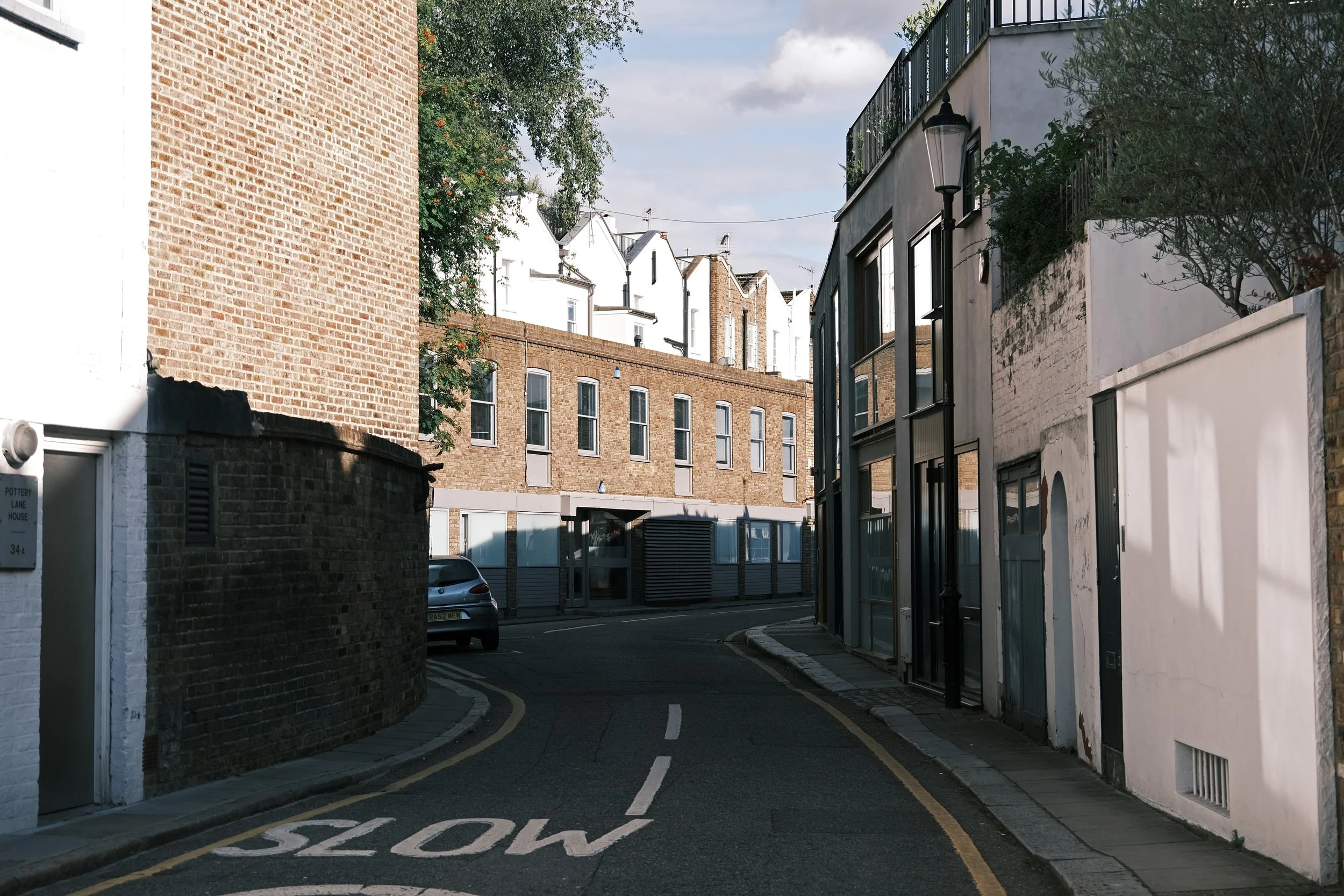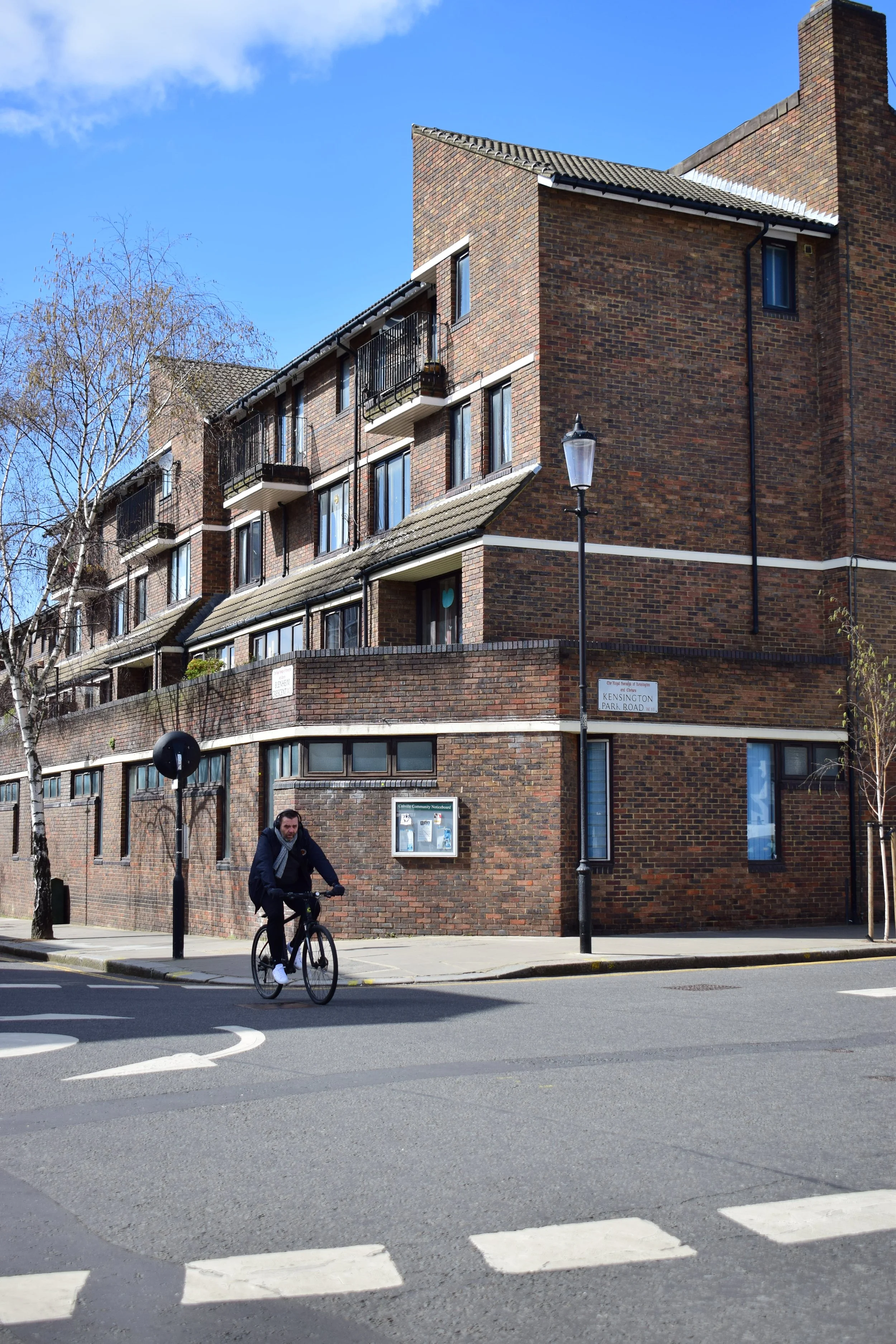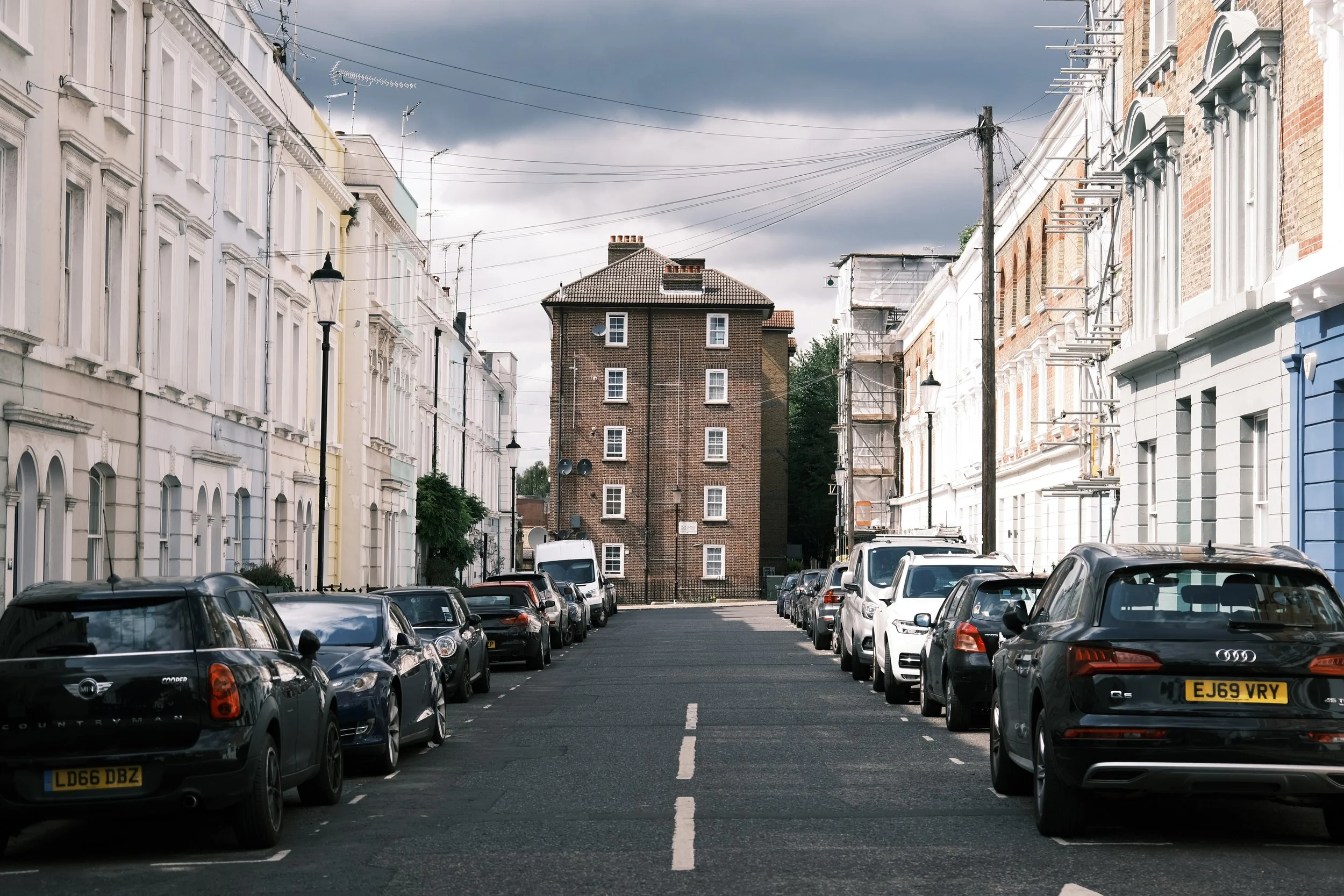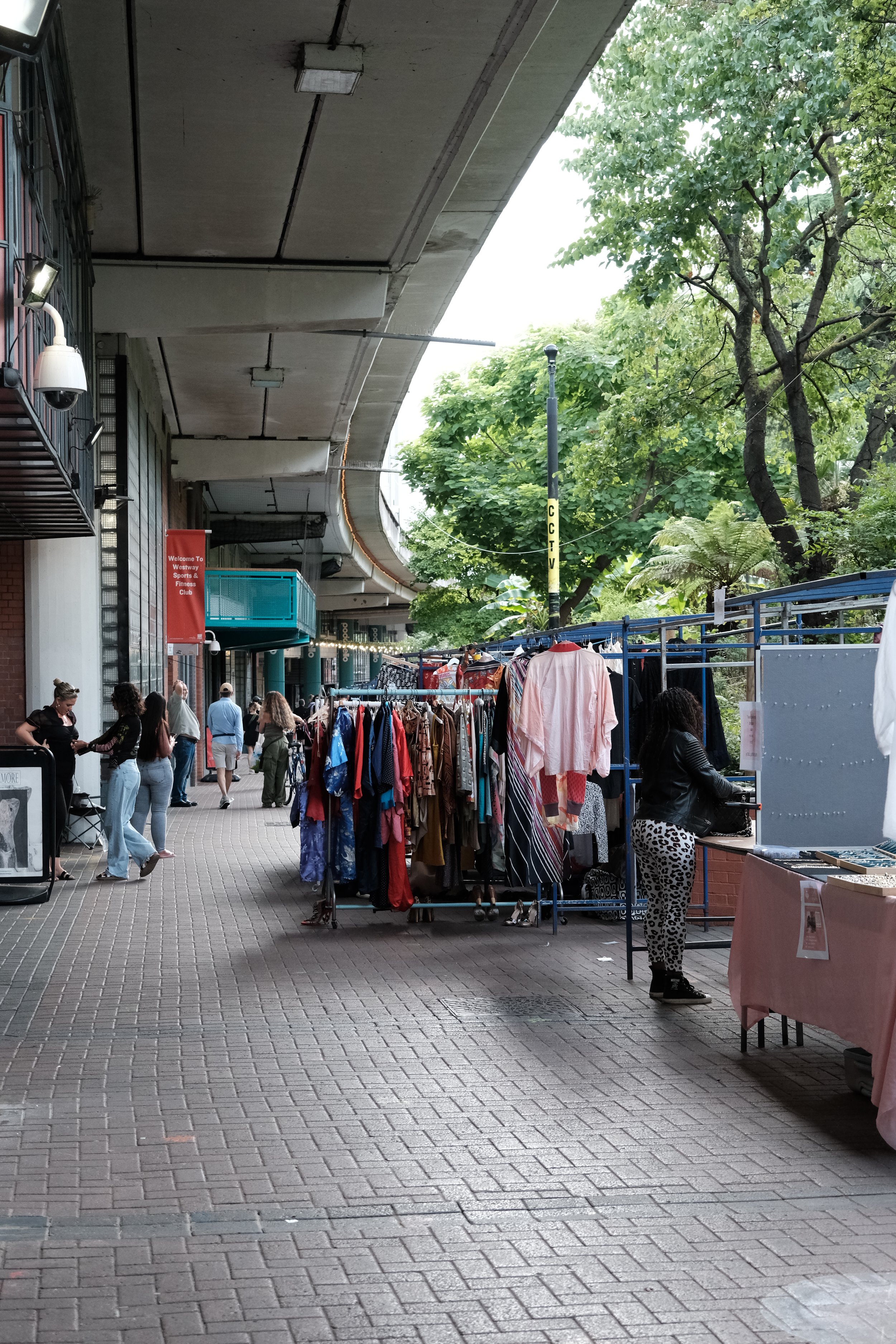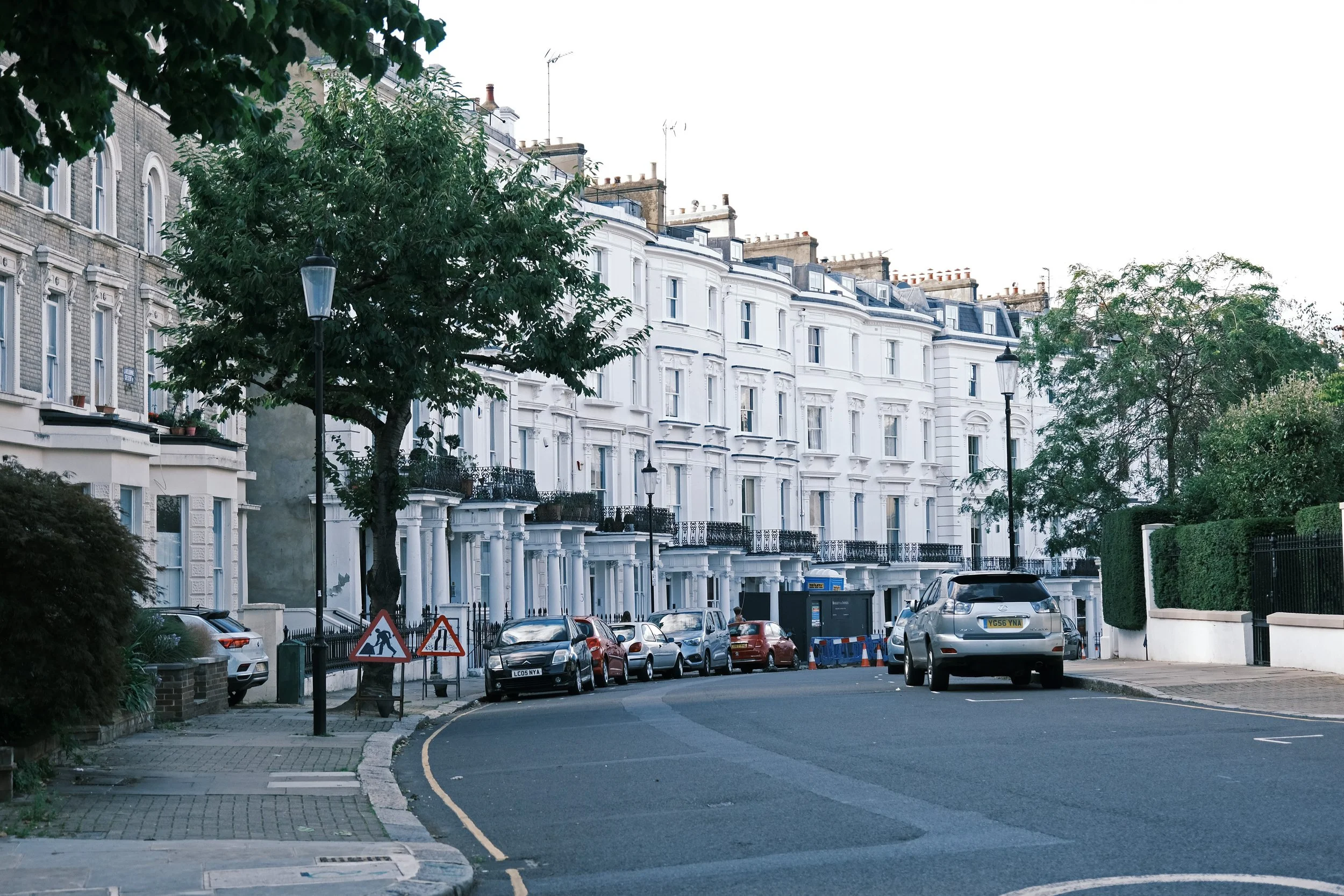the traces that remain:
stories from notting hill
photo credits: sally itani
Not many would believe that Notting Hill, now an extremely wealthy part of London, was once notorious for being a “slum”. This tour explores the stories behind the streets of Notting Hill and how their effects can be seen decades on.
Once a rural farmland owned by the Ladbroke Family, Notting Hill began to develop in the late 1700s with the family's dream of turning it into a lavish estate that rivals Regent's Park. While it may seem that their dream has finally become a reality, the area up until the second half of the 20th century had dilapidated into a slum. Fast-forward to today, Notting Hill is one of London’s most sought-after areas and has been witness to drastic racial tensions and hyper-gentrification.
Architecture and urban spaces are the backdrop to everyday life. People influence how these spaces take shape, but these spaces also have the power to make or break communities. Decisions made in architecture and urban planning often have long-lasting effects on communities and inevitably instigate gentrification – a problem most districts in London face today.
This tour will trace back the history of Notting Hill and the struggles of its people - from the Piggeries and Potteries to the Notting Hill Race Riots of 1958 to the erection of the Westway Flyover that sliced through communities - using the urban fabric to understand the underlying tensions and their influence until this day.
sunday 20 october | 11.00 - 13.15
starting point: holland park underground station, W11 3RB


